|
|
Mass production faults
Mass production of mobile phones and the never-ending struggle for cost reduction occasionally result in some sort of defects, which keep low profile up to the release date, passed unnoticed by both testers and distributors. Sometimes, the synergy effect brought about by various factors may seem bizarre, but the fact is, even color scheme can affect reliability. Say, the recent story with the Sony Ericsson S500i, probably, would be the best example of that. All units coming in green tend to get their keys cracked 2-3 weeks into use, for the plastic can’t stand the strain. Surprisingly, all yellow-colored handsets never had such issues. We posted a message on the Sony Ericsson S500i’s defect in the VIP Lounge, a private section of our forum, where one of the explanations was the design of the keys themselves. But it was just recently when we learned that the green paint reacted with the adhesive used for sticking the buttons onto the casing. This way, because of the chemical reaction the base of the keys simply dissolved. At the same time, the yellow edition is free of such defects. Thankfully, only a few shipments of these phones have made it to Russia, and you can easily identify them by production date – assembled before week 27 of this year. This case is covered by the warranty, meaning that you can easily get the keypad changed in any service centre.
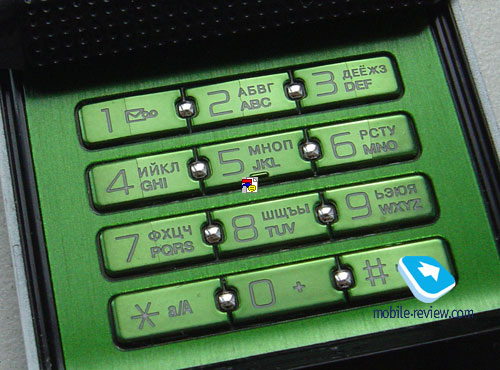
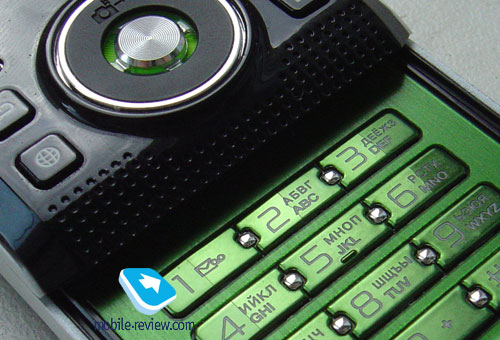
All companies having a wide array of models in their portfolios and large-scale production, as the probability theory puts it, are bound to suffer from faulty units more than anyone else. And they actually always do – the highlight of this article, Nokia occasionally runs into issues that were not revealed during the early stages of proof testing. They have much to do with faulty parts supplied to factories, or a crudely programmed production line. The first example coming to my mind is the story with the Nokia 8210 and the Nokia 3310, where the displays malfunctioned so often that the users literally queued up before service centers. Back then the company didn’t manage to provide the service centers with new displays, which resulted in huge lines of users waiting for their handsets to be repaired (in some regions of Russia it was the matter of months). It is important to realize that the service and customer care front was on a completely different level. Also, the story with a misadjusted automatic machine that hit the Nokia 6230 hard – its protective covers burned out, turning black, which allowed some service centers to reject maintenance claims. In this situation our intervention made the company publish a service bulletin and acknowledge this blackening as a non warranty-repair cancelling factor.
Last year, Nokia experienced no global issue with the quality of their handsets. Undoubtedly, every model had some flaws, but the way they were treated greatly depended on personal loyalty to the brand – many refused to spot the Nokia N71’s peeling-off edging, which was in fact a defect of the design. The number of flaws has varied from handset to handset, but it wouldn’t be right to claim that some device had a hundred percent faulty shipments. However, the Russian market saw an exception in the form of the Nseries models, which couldn’t tap into GPRS within MTS, Beeline, occasionally Megafon networks, though the latter almost didn’t experience such difficulties. The crux of the matter was the software installed on these handsets, which was tailored to more contemporary networks, rather than some custom variations offered by the Russian carriers. Another victim of this issue was Samsung and its flagship solution, the Samsung D600. Unfortunately the carriers’ unwillingness to upgrade their networks to meet the standards adds an element of chance into the equation. For example, at the moment all service centers across the country are upgrading firmware of absolutely new and still shining Nokia 6120 because of the same GPRS-Internet issues. It is not a rare occasion when a vendor like Nokia can’t physically provide a logistics network for a separate, albeit big, country, so as to develop bespoke software versions. That’s why all distributors are down to hand all received phones to service centers for free firmware flashing.
The stimuli that has brought this article here is the avalanche of messages suggesting the Nokia N76 has a casing especially exposed to wear and tear. The silver coating peels off to unsheathe bare plastic, so the handset loses its salable condition in no time. For something that costs 500-550 Euro (in Russia), this is a disgrace. Nevertheless, we have decided not to shoot from the hip and look into the roots of the problem, collect statistics on returns, learn about the reaction of service centers, distributors and the vendor himself.
One of our readers lent us his unit that had lost its charm in two weeks’ time. In the photos below you can see how worn the chrome plates have become, as well as the edge, so now the black chassis is on the surface. This holds true both for red and black editions of the N76 – the only difference is that the red-colored units tend to lose pieces of paint all round the casing, while the owners of the latter variant won’t experience this issue.
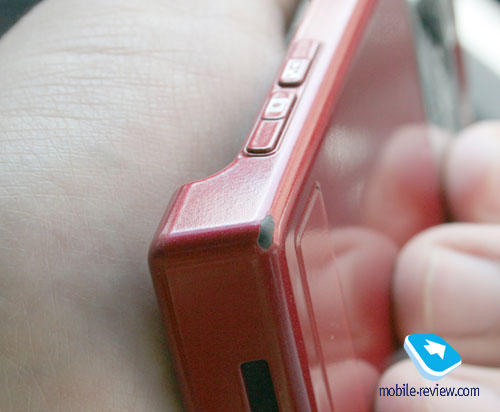
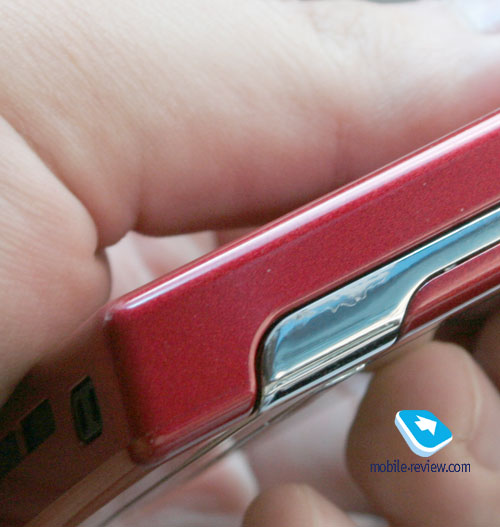

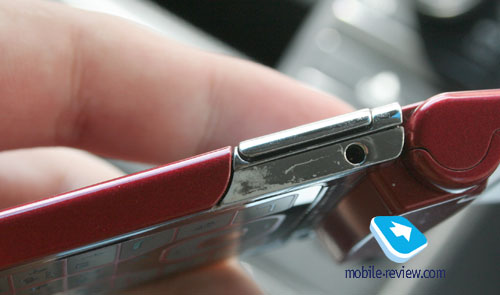
Last week Nokia’s service centers received a bulletin with a rundown of the problem, stating that this case is covered by the warranty and replacement of faulty parts should be free of charge. As of today, there are loads of spare parts available, so no shortage is expected in the near term. So, is this a really wide-spread disease, or all we do now is making a mountain out of a molehill?
According to our sources, this defect applies to nearly all Nokia N76 produced up until this day, and it has much to do with faulty parts supplied to the manufacturer, however the worst thing about it is that the spare parts delivered to service centers are no different. This means, that servicing your unit will merely bring you a temporal relief. In light of this fact, some European carriers have already discarded the model, specifically, the N76 is no longer available for purchase in the UK from Vodafone, as they took it off all price-lists on June 20 – no official statements have been made by the carrier as yet. But the rumor has it that Vodafone has returned all unsold units to the vendor – this point of view is explained here.
What does this mean to Nokia? Being one of the NSeries flagships, the N76 is currently promoted on the market at full tilt – in most regions, including Russia, the company runs with aggressive outdoor ads, you can see commercials on TV, learn about the handset from radio broadcasts. Basically, the phone is all around.

Have these advertising activities boosted the sales of the N76? Make no mistake about that. In Russia they sell not less than 4 thousand units a month (MRG data, July, 2007), which is a decent figure for this type of handset. As the advertising campaign heats up, the sales will at least double, which brings about a dangerous case. Who normally goes for these phones? Women – with fistful of cash, own mentality and style, those who have got used to a certain level of quality. For the most part, this audience is loyal to Nokia and recognizes it as a manufacturer of top-notch gadgets.
What happens when you get paint-related issues or reveal other defects – we will focus on this a bit later. But for now, what the first reaction to this will be? Obviously, the owner will come to a conclusion that Nokia’s quality is no longer as superb as it used to be, so he or she might consider switching to some different brand, morphing from a loyal consumer into the opposite category. Being unofficial “opinion leaders”, these people might also have a negative impact on Nokia’s image. However it won’t be the end of the world – previously the Nokia 8210 was in similar distress with its faulty display, but back then the vendor easily made it through. You shouldn’t dramatize the situation – after all, it is not the whole company, it is one single model. The tricky aspect here is that the N76 is a relatively popular and aggressively advertised offering.
Withdrawing this device from the market would be an unbearable price for the vendor to pay – rectifying this issue in service centers is way cheaper. The company’s reputation will take no fatal blows – Nokia has already suffered from this defect to a certain extent – what is really important to do is prevent similar cases from breaking out across the company’s portfolio.
We rarely recommend our readers to refrain from buying some handsets, however in the case with the Nokia N76, these flaws apply to all units, and what is more, there are no non-defective parts available in service centers. That’s why there isn’t much sense in picking this phone, unless you are willing to get over its decaying looks (which is the foundation of any fashion phone).
We also went to service centers to find out what problems the Nokia N76 had and what the main warranty claims were. And the figures we got for July were quite interesting – although this statistics is by no means representative or covers all regions, but the diagram below does give some clues on what’s going on.
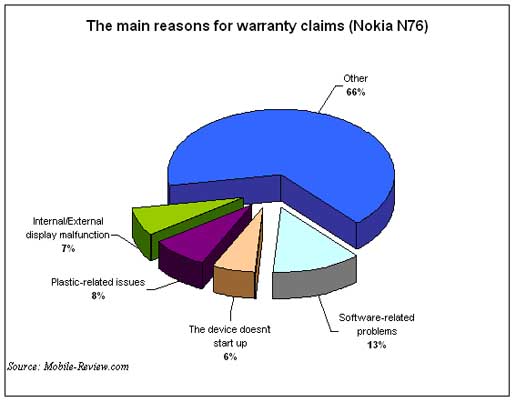
As you can see, the casing quality is by far not the most crucial defect. However, this doesn’t automatically mean it is non-existent – the fact of the matter is that faulty handsets normally arrive at service centers a tad later and since the Nokia N76 started shipping early in June, many units with this flaw haven’t been reported as yet. The statistics is also interfered by other defects typical for all models – displays, software, which are pretty much par for the course. But what is really important here, is the share of plastic-related issues, indirectly indicating the mass character of this defect.
We asked the Russian headquarters of Nokia to shed some light on the situation. Maxim Pavlov, Nokia’s Service Manager in CIS countries, comments: «We are aware of the issues with certain casing components in the Nokia N76. All authorized Nokia’s service centers have been notified that the warranty does cover this defect of the Nokia N76. Nokia is seriously concerned about the quality of own products and we are doing everything possible to improve the situation around the Nokia N76. All service centers have enough details at their disposal, so the repair time will be minimal».
We, on our part, decided to examine the reaction of retailers. Most distributors have already come across returns of the N76, but unlike the service centers they haven’t been notified by Nokia. As the result the market is still confused about this issue. In the vast majority of retail networks you can replace a faulty unit within two weeks, given that you have an opinion letter from a service center stating that the defects you have encountered stem from the production flaws. Many retailers meet consumers halfway and replace their units without a letter from a service center (but give refunds very rarely). Regrettably, the service centers usually refuse to give opinion letters reasoning that with lack of experience, obscure forms etc. – but in fact, this is a direct violation of the law and you can insist on getting a letter, should a conflict situation arise, to get your money back from the retailer you bought the unit from (which is possible with this letter in hands).
For example, one of M-Video stores features both a brand-new Nokia N76 and a returned unit with paint defects, whose price tag has dropped all the way down to 350 USD (against 760 USD for a new device).
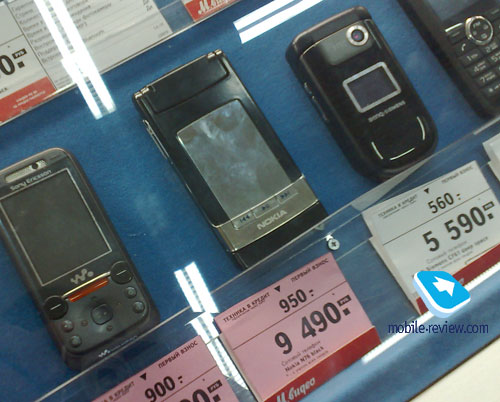
None of the vendors can possibly avoid flaw in production cycles. Unfortunately, Nokia ran into them with one of its key offerings. In our opinion, being aware of such flaws you should refrain from buying this device; or, in case you already own one, wait about 3-6 months until defect-free spare parts arrive and only then call at the nearest service center. Although this is a very rough time span, taking account of mass returns in all regions and lack of high-quality parts there days, it is unlikely that Nokia will be able to sort it out faster. And if you can’t stand waiting, then you can easily return your unit, replace it, or get a refund.
P.S. P.S. Nobody is perfect, therefore this global issue with the Nokia N76 is not the reason to stand up and proclaim that all Nokia-branded handsets retain similar problems. Please, be more reasonable in your judgments.
Eldar Murtazin (eldar@mobile-review.com)
Translated by Oleg Kononosov (oleg.kononosov@mobile-review.com)
Published — 3 Augest 2006
Have something to add?! Write us... eldar@mobile-review.com
|
News:
[ 31-07 16:21 ]Sir Jony Ive: Apple Isn't In It For The Money
[ 31-07 13:34 ]Video: Nokia Designer Interviews
[ 31-07 13:10 ]RIM To Layoff 3,000 More Employees
[ 30-07 20:59 ]Video: iPhone 5 Housing Shown Off
[ 30-07 19:12 ]Android Fortunes Decline In U.S.
[ 25-07 16:18 ]Why Apple Is Suing Samsung?
[ 25-07 15:53 ]A Few Choice Quotes About Apple ... By Samsung
[ 23-07 20:25 ]Russian iOS Hacker Calls It A Day
[ 23-07 17:40 ]Video: It's Still Not Out, But Galaxy Note 10.1 Gets An Ad
[ 19-07 19:10 ]Another Loss For Nokia: $1 Billion Down In Q2
[ 19-07 17:22 ]British Judge Orders Apple To Run Ads Saying Samsung Did Not Copy Them
[ 19-07 16:57 ]iPhone 5 To Feature Nano-SIM Cards
[ 18-07 14:20 ]What The iPad Could Have Looked Like ...
[ 18-07 13:25 ]App Store Hack Is Still Going Strong Despite Apple's Best Efforts
[ 13-07 12:34 ]Infographic: The (Hypothetical) Sale Of RIM
[ 13-07 11:10 ]Video: iPhone Hacker Makes In-App Purchases Free
[ 12-07 19:50 ]iPhone 5 Images Leak Again
[ 12-07 17:51 ]Android Takes 50%+ Of U.S. And Europe
[ 11-07 16:02 ]Apple Involved In 60% Of Patent Suits
[ 11-07 13:14 ]Video: Kindle Fire Gets A Jelly Bean
Subscribe
|








